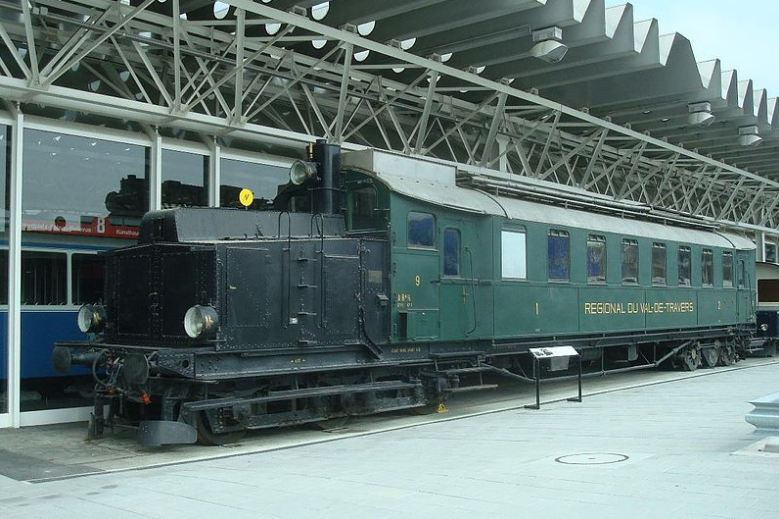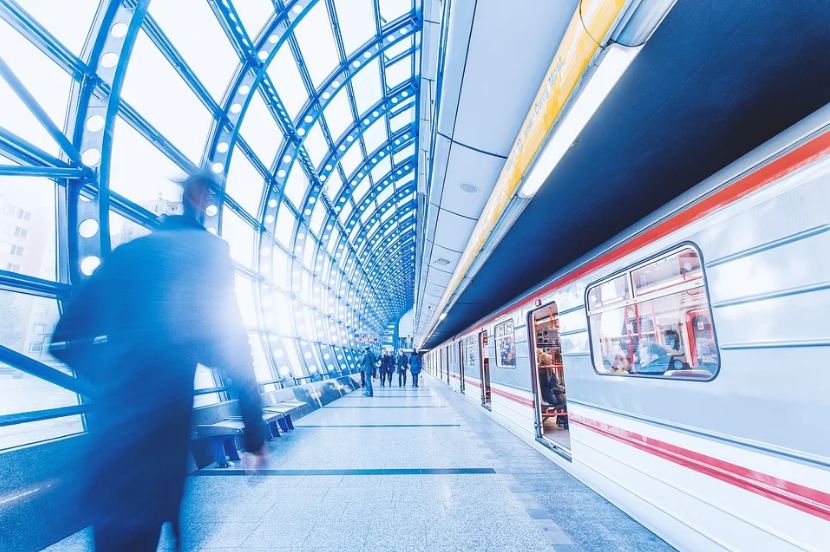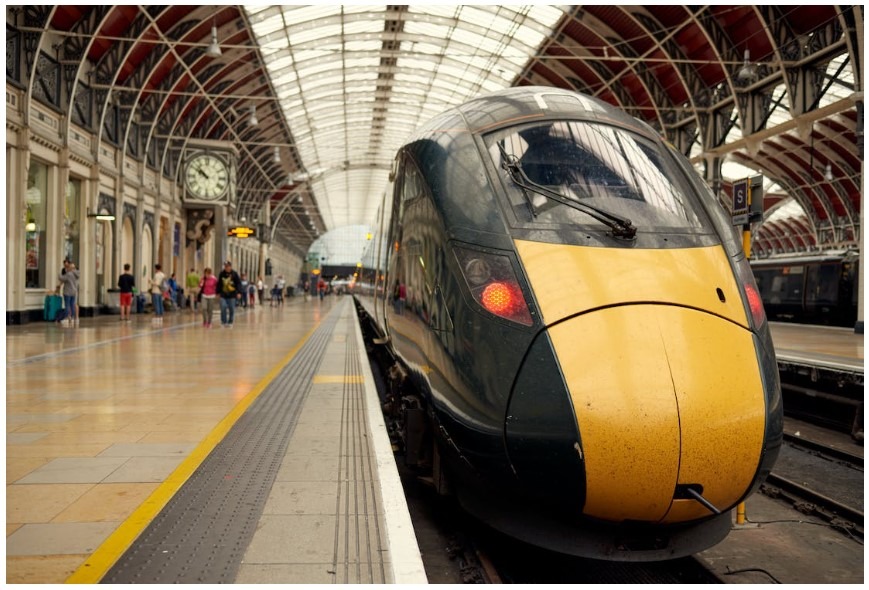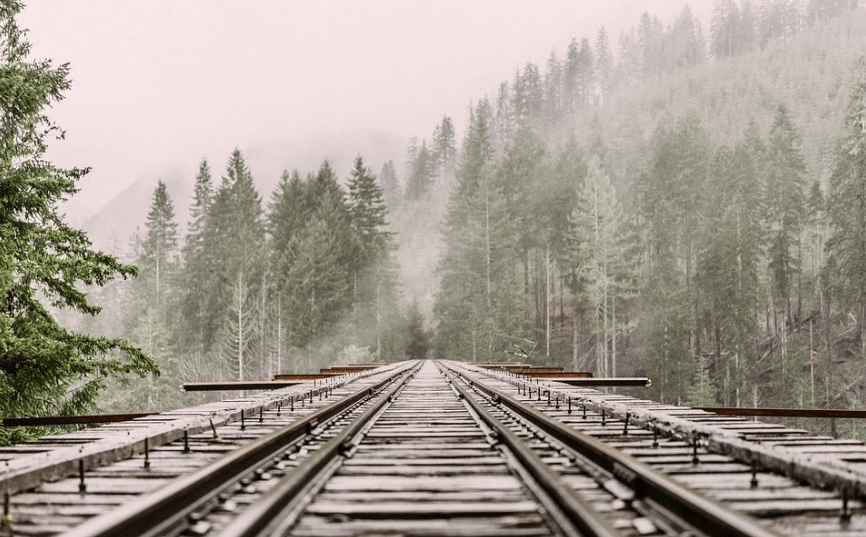Amazing Train Tunnels Around the World

Imagine driving or taking a train beneath the sea with tons of water above your head. Underwater tunnels make this possible. These engineering feats have transformed how we travel and connect with places across oceans, rivers, and bays. From the earliest tunnels to modern-day innovations, these structures showcase human ingenuity and our determination to overcome natural barriers. Let's dive into the world of underwater tunnels and explore the incredible advancements that made them possible.
The First Underwater Tunnels
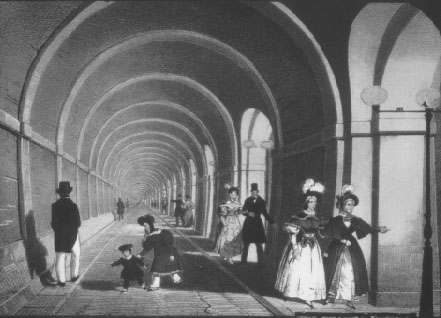
The idea of building tunnels underwater started in the early 19th century. Here are the firsts to be established:
Thames Tunnel (England)
The Thames Tunnel, completed in 1843, was the world's first tunnel constructed under a major river. It spans 366 meters beneath the River Thames and connects Rotherhithe and Wapping. Designed by Marc Isambard Brunel and his son, Isambard Kingdom Brunel, it was initially intended for horse-drawn carriages but opened as a pedestrian tunnel and later became part of the London Underground in 1913. The tunnel reached 75 feet below the river and faced many construction challenges, including flooding.
Due to its unprecedented scale and complexity, the Thames Tunnel was once considered the "Eighth Wonder of the World." Its massive public opening attracted over 50,000 visitors in just one day. Today, the tunnel is a tribute to Victorian-era ingenuity and remains an integral part of London's transportation network.
Mersey Railway Tunnel (England)
Opened in 1886, the Mersey Railway Tunnel was the world's first underwater rail tunnel, running 1.2 km beneath the River Mersey. It connects Liverpool and Birkenhead and was initially constructed for steam-powered trains, which were later converted to electric by 1903 to address ventilation issues. This tunnel set the standard for future railway tunnels and continues to serve the Merseyrail network today.
Severn Tunnel (England-Wales)
The Severn Tunnel, completed in 1886, is one of the oldest underwater rail tunnels in the world, stretching 7 km under the Severn Estuary to connect Wales and England. Construction was an immense challenge, particularly due to the discovery of the "Great Spring," a massive underground water source that caused continuous flooding during construction. Engineers had to install powerful pumps to keep the tunnel dry—a task that continues to this day, with around 20 million gallons of water pumped out daily. Despite these difficulties, the tunnel opened in 1886 and remains a key rail link.
Blackwall Tunnel (Western) (England)
The Blackwall Tunnel, opened in 1897, was the world's first underwater vehicular tunnel, running 1.35 km beneath the River Thames in London. It was constructed to ease congestion in the city and provide an additional crossing point. The tunnel was built using innovative techniques to support the high water pressure and the complexity of tunneling beneath the river. Initially used for horse-drawn carriages and pedestrian traffic, it eventually became a crucial vehicle roadway. Today, it serves as a major thoroughfare for cars traveling between Greenwich and Tower Hamlets.
Famous Underwater Tunnels Around the World
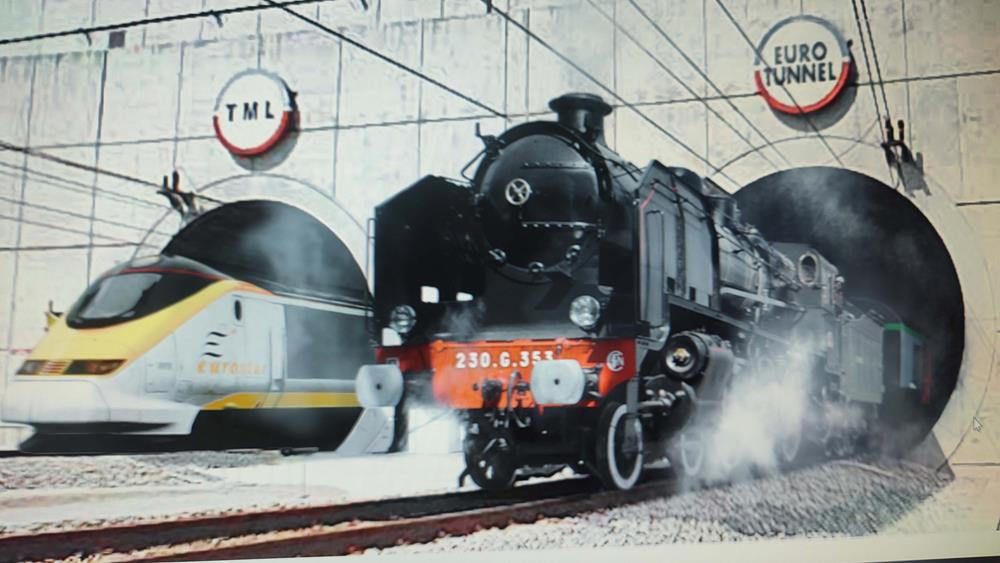
Today, underwater tunnels span the globe, serving millions of travelers daily. But here are the most well-known ones:
Channel Tunnel (England-France)
The Channel Tunnel, often called the "Chunnel," opened in 1994 and spans 50.46 km between Folkestone in the UK and Coquelles in France. 37.9 km of the tunnel runs under the English Channel, making it the longest underwater portion of any tunnel globally. This impressive structure cost around £9 billion to build (equivalent to £22.6 billion today). The tunnel carries high-speed Eurostar trains, freight trains, and vehicle-carrying shuttle services, transforming travel between the UK and mainland Europe, with train speeds reaching 160 km/h. It significantly shortened the journey time to just 35 minutes.
Marmaray Tunnel (Turkey)
The Marmaray Tunnel connects the European and Asian sides of Istanbul under the Bosphorus Strait, with its underwater section stretching 1.4 km. Opened in 2013, it is part of a larger rail network that spans 76 km. Its earthquake-resistant design sets the Marmaray apart, which is crucial given Istanbul's proximity to a major fault line. The tunnel sits 60 meters below sea level, making it the world's deepest immersed tube tunnel. The project's completion was delayed due to archeological finds during excavation, some dating back 8,000 years.
Busan–Geoje Fixed Link (South Korea)
The Busan–Geoje Fixed Link combines a bridge and tunnel system connecting Busan to Geoje Island in South Korea. The 3.7 km underwater portion is part of an 8.2 km project completed in 2010. Prior to its construction, travelers faced long detours or ferry rides. This tunnel, built using submerged tube technology, cost around $1.8 billion and significantly cut travel time between the two locations to 50 minutes. The tunnel is a key infrastructure piece that supports the local economy, especially the island's shipbuilding industry.
Longest and Deepest Underwater Tunnels
On the other hand, these are notable underwater tunnels due to their impressive length and depth:
Seikan Tunnel (Japan)
When it comes to both length and depth, the Seikan Tunnel in Japan holds the record. It stretches over 53 km and plunges 240 meters below sea level at its deepest point. Completed in 1988, this tunnel lies beneath the Tsugaru Strait, which separates Honshu from Hokkaido. Built to facilitate rail traffic, it was a response to multiple ferry accidents in the 1950s. It has withstood earthquakes and other natural challenges due to its robust engineering.
Gotthard Base Tunnel (Switzerland)
Although not entirely underwater, the Gotthard Base Tunnel is the longest traffic tunnel in the world, stretching 57 km under the Swiss Alps. It also reaches a record depth of 2,450 meters below the surface. Completed in 2016, this railway tunnel significantly reduces travel time between northern and southern Europe. It took nearly 20 years and €11 billion to complete, with a remarkable excavation of over 28 million tons of rock. The Gotthard Base Tunnel accommodates both freight and passenger trains, with speeds up to 250 km/h.
Other Underwater Tunnels Around the World
These tunnels may not be the longest or the deepest, but they are just as vital to the areas they serve, showcasing the global impact of underwater tunneling technology. These are the rest of the underwater tunnels around the world:
- Elbe Tunnel (1911) (Germany) – Hamburg's pioneering pedestrian and vehicular tunnel.
- Holland Tunnel (USA) – The longest continuous underwater vehicular tunnel at its time, crossing the Hudson River.
- Detroit–Windsor Tunnel (USA-Canada) – A vital connection between the USA and Canada under the Detroit River.
- CESC Tunnel (India) – Asia's first underwater tunnel, built for electric power transmission.
- Tongyeong Undersea Tunnel (South Korea) – Asia's first undersea tunnel, connecting Tongyeong with Mireukdo Island.
- Queensway Tunnel (England) – A landmark vehicular tunnel under the Mersey River.
- Bankhead Tunnel (USA) – A crucial road tunnel in Mobile, Alabama.
- Kanmon Railway and Roadway Tunnels (Japan) – Connecting Honshu and Kyushu with both rail and road tunnels.
- Lincoln Tunnel (USA) – A famous series of tunnels linking New York and New Jersey.
- Havana Tunnel (Cuba) – A road tunnel under Havana Bay was completed during the Batista era.
- George Massey Tunnel (Canada) – The first tunnel in British Columbia to use immersed tube technology.
- Muskö Tunnel (Sweden) – Connecting Muskö Island to the mainland near Stockholm.
- Sandoyartunnilin (Faroe Islands) – Connecting the island of Sandoy to the mainland.
- Chesapeake Bay Bridge-Tunnel (USA) – A unique combination of bridge and tunnel connecting Virginia Beach to the Eastern Shore.
- Transbay Tube (USA) – An underwater rail tunnel connecting Oakland and San Francisco.
- Cross-Harbour Tunnel (Hong Kong) – A busy road tunnel linking Hong Kong's Kowloon Peninsula and Hong Kong Island.
- Elbe Tunnel (1975) (Germany) – An eight-lane road tunnel in Hamburg.
- Ahmed Hamdi Tunnel (Egypt) – An essential tunnel under the Suez Canal.
- Vardø Tunnel (Norway) – Connecting the remote community of Vardø to the mainland.
- Kanonersky Tunnel (Russia) – Linking Kanonersky Island to Saint Petersburg.
- Flekkerøy Tunnel (Norway) – Connecting Flekkerøy Island to southern Norway.
- Hitra Tunnel (Norway) – Once the world's deepest tunnel at the time of its construction.
- Tokyo Bay Aqua-Line (Japan) – The second-longest underwater road tunnel.
- Massachusetts Bay Outfall Tunnel (USA) – A critical sewage outfall tunnel for Boston Harbor.
- North Cape Tunnel (Norway) – Connecting Magerøya Island to the mainland.
- Bømlafjord Tunnel (Norway) – The deepest tunnel in the international E-road network.
- Xiang'an Tunnel (China) – Connecting the Chinese cities of Xiamen and Xiang'an.
- Marina Coastal Expressway (Singapore) – Singapore's first undersea tunnel.
- Port of Miami Tunnel (USA) – A major tunnel connecting downtown Miami to the Port of Miami.
- Eurasia Tunnel (Turkey) – A road tunnel connecting Europe and Asia under the Bosphorus.
- Riachuelo Lot 3 Tunnel (Argentina) – One of the world's longest outfall undersea tunnels.
- Ryfast Tunnel (Norway) – The longest and deepest undersea road tunnel for cars.
- Eysturoyartunnilin (Faroe Islands) – Featuring an underwater roundabout.
- Tuen Mun–Chek Lap Kok Link (Hong Kong) – A key sea crossing tunnel in Hong Kong.
- Boryeong Undersea Tunnel (South Korea) – The fifth-longest underwater tunnel in the world.
- Musaimeer Outfall Tunnel (Qatar) – A vital infrastructure tunnel for water management in Doha.
- Haicang Tunnel (China) – A road tunnel in Xiamen, connecting Haicang District.
- East West Metro Tunnel (India) – India's largest underwater metro railway tunnel.
- Bangabandhu Sheikh Mujibur Rahman Tunnel (Bangladesh) – The first under-river road tunnel in South Asia.
- Hvalfjörður Tunnel (Iceland) – Connecting Reykjavik to western Iceland.
- Great Belt Fixed Link (Denmark) – A rail and road link between Danish islands.
These tunnels, spread across continents and serving diverse purposes, highlight how underwater tunneling has become crucial to infrastructure development. Whether for trains, cars, or utilities, each tunnel plays a significant role in boosting connectivity and improving travel efficiency.
Challenges of Building Underwater Tunnels
Building underwater tunnels is no easy task. From strong water pressure to shifting seabeds, engineers face several challenges. For one, the deeper you go, the more water pressure you must contend with. For example, the Seikan Tunnel in Japan plunges 240 meters beneath sea level, meaning the structure needs to be incredibly strong to withstand that kind of pressure. The Seikan Tunnel took 17 years to build, involving over 3,000 workers, and faced several natural challenges, including dangerous water pressure and harsh weather conditions.
Waterproofing is another major hurdle. Keeping water out while digging through rock, soil, or sand requires precision. In some cases, builders use pressurized air to prevent water from flooding the construction site. However, even after the tunnel is completed, maintaining the waterproofing system is a continuous job.
Environmental concerns are also a factor. Large-scale construction projects, especially those that cut through natural habitats, can impact marine life. Engineers must balance building the tunnel with protecting the environment. For example, tunnels like the Busan–Geoje Fixed Link in South Korea had to consider the surrounding ocean ecology to minimize disruption. Modern projects often use environmentally friendly materials and techniques to reduce their impact.
Finally, safety protocols play a crucial role. Tunnels need to be designed to handle unexpected stresses in areas prone to natural disasters, such as earthquakes. The Marmaray Tunnel in Turkey, for instance, was built with seismic activity in mind due to its location near an earthquake fault line.
The Future of Underwater Tunnels
The future of underwater tunnels is bright, with several ambitious projects on the horizon. One notable project is the Fehmarnbelt Tunnel, which will connect Denmark and Germany. When completed, it will be one of the longest submerged tunnels in the world, stretching over 18 km. This tunnel will feature a roadway and a rail system, dramatically reducing travel times between the two countries.
There are also plans to improve the technology used in tunnel construction. With advances in machinery, such as Tunnel Boring Machines (TBMs), engineers can now build tunnels faster and more safely than ever before. These machines, some as long as football fields, can dig through tough terrain while reinforcing the tunnel behind them, reducing the risk of collapse.
Another exciting future project is the potential construction of an underwater tunnel between Finland and Estonia. This tunnel, still in the planning stages, would link Helsinki and Tallinn under the Gulf of Finland, significantly boosting trade and travel between the two countries.
As cities grow and demand for efficient travel increases, underwater tunnels will continue to play a critical role in connecting the world. Innovation in engineering is bound to make future tunnels even more impressive and vital to our global infrastructure.
Conclusion
Underwater tunnels are marvels of engineering that continue to push the boundaries of what's possible. These structures have revolutionized transportation and infrastructure from the first tunnels of the 19th century, like the Thames Tunnel, to the record-breaking Seikan Tunnel in Japan. Not only do they save time and connect distant places, but they also show how far engineering has come.
Building underwater tunnels presents numerous challenges, from battling water pressure to ensuring environmental sustainability. However, modern technology has allowed engineers to overcome these obstacles, and with projects like the Fehmarnbelt Tunnel on the horizon, the future of underwater tunnels looks incredibly promising. These tunnels will continue to shrink distances, improve trade, and make travel more convenient for millions of people worldwide.

